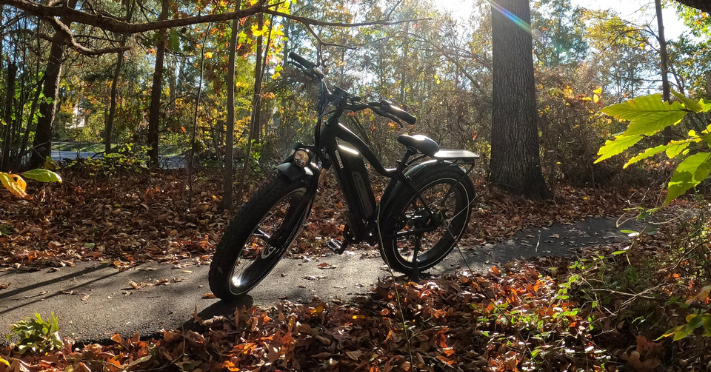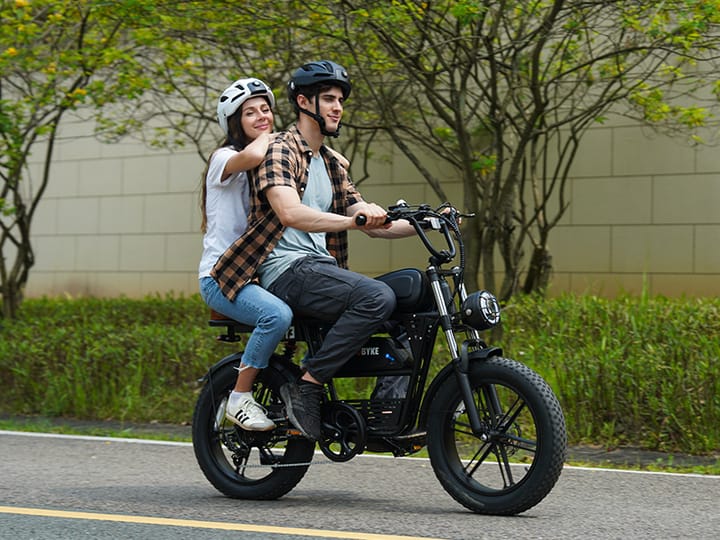How to Choose Your First E-Bike: A Beginner’s Guide
Let's break down the essentials: motor types, range, battery sizes + more.

E-bikes are no longer a fringe gadget for tech enthusiasts, they’ve gone mainstream.
Cities across the world are seeing bike lanes packed with commuters who’ve swapped traffic jams and gas bills for pedal-assist freedom.

Whether you’re eyeing one for commuting, errands, fitness, or just pure fun, choosing your first e-bike can feel overwhelming.
The market is crowded with models, buzzwords, and bold claims about speed and range.
But don’t worry, this guide breaks it down into the essentials: motor types, range, battery sizes, and what you can realistically expect for your budget.
Thanks for reading! Subscribe for free to receive new posts and support my work.
Step 1: Decide How You’ll Use It
Before diving into specs, think about your primary use case:
- Commuting: Look for comfort, fenders, racks, and good range.
- Errands & Cargo: Prioritize sturdy frames, cargo racks, and stronger motors.
- Trail Riding: Mid-drive motors and full suspension shine off-road.
- Leisure & Fitness: Lightweight, nimble bikes keep things fun.
Your lifestyle will guide every other decision.
Step 2: Understand Motor Types
E-bikes typically use two motor styles:
Hub Motors (usually in the rear wheel):
Simple, reliable, and affordable.
Great for flat terrain and city riding.
Downsides: less efficient on hills, less natural pedaling feel.
Mid-Drive Motors (in the crankset):
More powerful, especially on hills.
Efficient use of gears for better range.
More expensive and requires more maintenance.
If you mostly ride city streets, a hub motor is fine. If you’re tackling hills or hauling weight, mid-drive is worth the upgrade.
Step 3: Battery & Range
The heart of an e-bike is its battery.
Most batteries are measured in watt-hours (Wh), the bigger the number, the longer the range.
- 250–400 Wh: Light use, short commutes (15–30 miles).
- 400–600 Wh: Balanced range, good for most riders (30–50 miles).
- 600–750+ Wh: Long commutes, hilly terrain, or cargo loads (50+ miles).
⚡Pro tip: Real-world range is usually 30–40% less than advertised due to hills, wind, rider weight, and assist level.
Step 4: Price Tiers—What to Expect
E-bikes cover a wide spectrum of pricing.
Here’s a realistic breakdown:
Budget ($800–$1,500):
Hub motors, smaller batteries, entry-level components.
Perfect for casual riders or short commutes.
Mid-Range ($1,500–$3,000):
Higher quality parts, mid-drive options, bigger batteries.
Good balance of performance, comfort, and durability.
Premium ($3,000+):
Top-tier motors (Bosch, Shimano, Brose), integrated batteries, premium frames.
Designed for heavy use, commuting reliability, and serious off-road adventures.
Step 5: Comfort & Fit
Don’t overlook ergonomics. Test ride if you can.
- Step-through frames are easier for city use and casual riding.
- Suspension forks help with bumpy commutes.
- Adjustable handlebars & seats make longer rides more enjoyable.
Step 6: Practical Features
Look for the extras that match your needs:
- Racks & fenders for commuting.
- Integrated lights for safety.
- Removable battery for easier charging.
- Hydraulic disc brakes for reliable stopping power.
Final Thoughts
Your first e-bike doesn’t have to be the “perfect” bike, it just needs to fit your lifestyle and budget.
Think about how and where you’ll ride most often, then match the motor, battery, and price tier to those needs.
Start simple, ride often, and you’ll quickly discover why so many people say their e-bike was the best purchase they’ve made in years.
Thanks for reading! Subscribe for free to receive new posts and support my work.



Comments ()